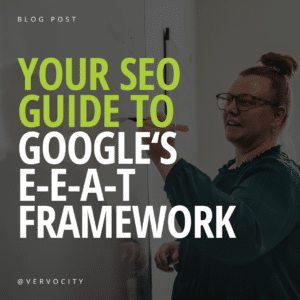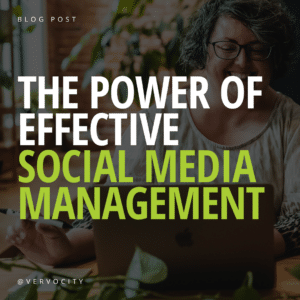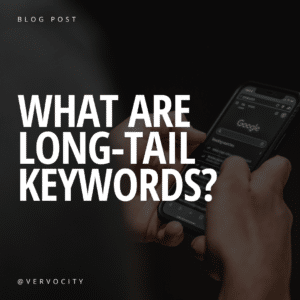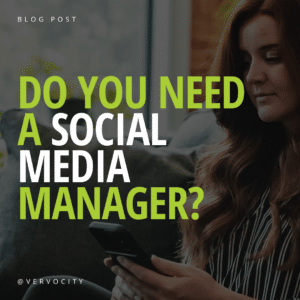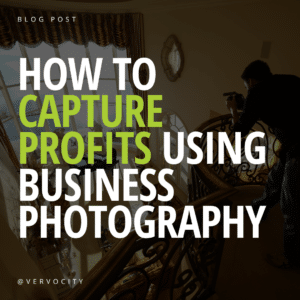Small business owners often face a common challenge when it comes to marketing – how to stand out from the crowd with limited resources.
Digital marketing has provided more opportunities for smaller businesses to compete with bigger brands. Content marketing, in particular, can be used to create a unique brand voice and connect with customers on a deeper level. By creating valuable content, you can attract and retain your target audience, showcase your expertise, and establish your brand as a trustworthy authority in your industry.
In this blog, we’ve compiled content marketing tips for small businesses that we’ve learned throughout the years.
But First, Develop a Content Strategy
A content strategy outlines how your content can support your business goals, audience needs, and brand values. It is an evolving and flexible plan that guides your content creation, distribution, and promotion.
There are many moving parts within an effective content strategy. The first step is to identify your target audience. Take note of their pain points, interests, and preferences, as well as the topics, formats, and channels that resonate with them. Plan your content around the buyer’s journey and the different stages of awareness.
Your content strategy should also define your brand voice, tone, and messaging. Identify different goals (awareness, engagement, conversions, etc.) for different content, and prioritize where you’d like to improve.
At Vervocity, we have helped our clients develop content strategies across many different platforms, including:
- Social media campaigns
- Websites
- Email marketing
- E-commerce product descriptions
- Video scripts
- Radio scripts
- Brand messaging
- SEO blog posts
- Graphic design + print materials
- & many other digital marketing materials
A content strategy is a brief overview of the audience you’d like to target, content your customers want to hear, and places where you can reach them. Once you’ve established the basics of your content strategy, you can begin segmenting the platforms and creating plans for each one separately.
We understand that telling you how to create an effective content strategy is easier said than done, so we’ve put together a few ways to help your content stand out.
1. Create Compelling Content
Effective content is the heart and soul of content marketing. You may be thinking “I understand that, but what makes content effective?”
Try to match your perspective to the minds of your customers. Speak directly to your audience’s needs, questions, and aspirations. Provide them with insights, solutions, and inspiration. Tell them what they want or need to hear, not just what you want to say. Your content should also reflect your brand personality and style, be visually appealing, and easy to consume.
Here are some tips that we use to create compelling content:
- Use a catchy headline that grabs attention and promises value.
- Craft an opening that hooks the reader and teases the main idea.
- Use a storytelling approach that connects emotionally with the reader.
- Mix up different formats such as blog posts, videos, infographics, e-newsletters, and social media.
- Consider writing in a conversational tone.
- Use visuals that enhance the message and break up the text.
- Make your content easy to scan and read by using subheadings, bullet points, short paragraphs, or white space.
- Inject humor (when appropriate), personality, and authenticity into your content to stand out from the corporate jargon.
- Don’t be afraid to experiment with different types of content as you figure out what resonates with your specific audience.
Connect with Your Audience to Build Relationships
Compelling content allows businesses to connect with their audience and build long-term relationships.
Think of content creation as a long term strategy. Don’t underestimate the power of social media and email marketing to engage with your followers. Be sure to reply to their comments and questions and offer them exclusive discounts or promotions. Use customer feedback and reviews to improve your products or services and show your audience that you value their feedback.
2. Promote Your Content
Creating great content is only half the battle; the other half is promoting it. Unless you reach out to your target audience and distribute your content where they hang out, it won’t get much traction or visibility.
Here are some ways to promote your content:
- Share your content on social media platforms where your audience is active. Use social media ads to reach a wider audience or target specific segments.
- Leverage email marketing to nurture your leads and customers with relevant and personalized content. Send regular updates with links to your latest content. Use email automation to save time and maximize engagement.
- Partner with influencers, bloggers, or other businesses that share your target audience and can endorse your content or collaborate with you.
- Repurpose your content into different formats or channels to reach new audiences and reinforce your message. For example, turn your blog post into a podcast episode or social media posts, or turn your infographic into a video.
- Use paid search, like pay-per-click advertising, or display advertising to amplify your content visibility and attract more traffic to your website or landing pages.
- Participate in relevant online communities like Reddit, Quora, or industry-specific forums. Share your content when it’s relevant and adds value to the discussion.
- Use search engine optimization techniques to improve the visibility of your content in search results. Use relevant keywords, optimize meta descriptions, and create quality backlinks to help your SEO efforts.
The key to effectively promoting your content is knowing where your target audience is. Your content strategy from earlier in this blog should have provided insights into where your audience hangs out.
3. Measure Your Results
Content marketing is not a one-time event. It is a continuous process of learning, experimenting, and improving.
As you publish your content, track and measure the results to adjust your strategy accordingly.
Here are some basic metrics you can use to evaluate your content performance:
- Traffic: Measure how many people visit your website or landing pages. Track how long they stayed and what pages they left from.
- Engagement: Measure how many people like, comment, share, or bookmark your content. Track the amount of leads or conversions you receive.
- Reach: Measure how many people see your content on social media, email, or other channels.
- Brand Awareness: Measure how many people associate your brand with the topics, values, or benefits you address in your content.
- Return on Investment (ROI): Measure how much money you spent on your content marketing and how much revenue or cost savings you generated in response to it.
Tools like Google Analytics and social media analytics will help you measure your performance. Make sure your platforms are set up to track your progress before you get started.
Conclusion
Creative and effective content marketing can help small businesses grow and stay competitive in their market. We hope that the above tips and tricks provide a starting point for connecting with your target audience.
Ready to start publishing engaging and SEO driven content, but don’t have the time?
Vervocity can help. We have a talented team of individuals that can craft high-quality content that drives traffic, leads, and sales to your business. Call us at (217) 222-1451 or contact us today to start the conversation.

